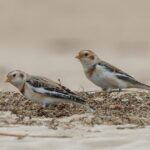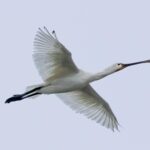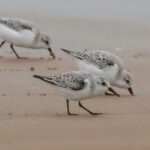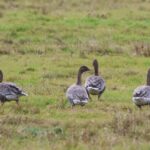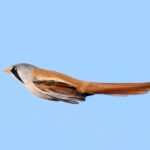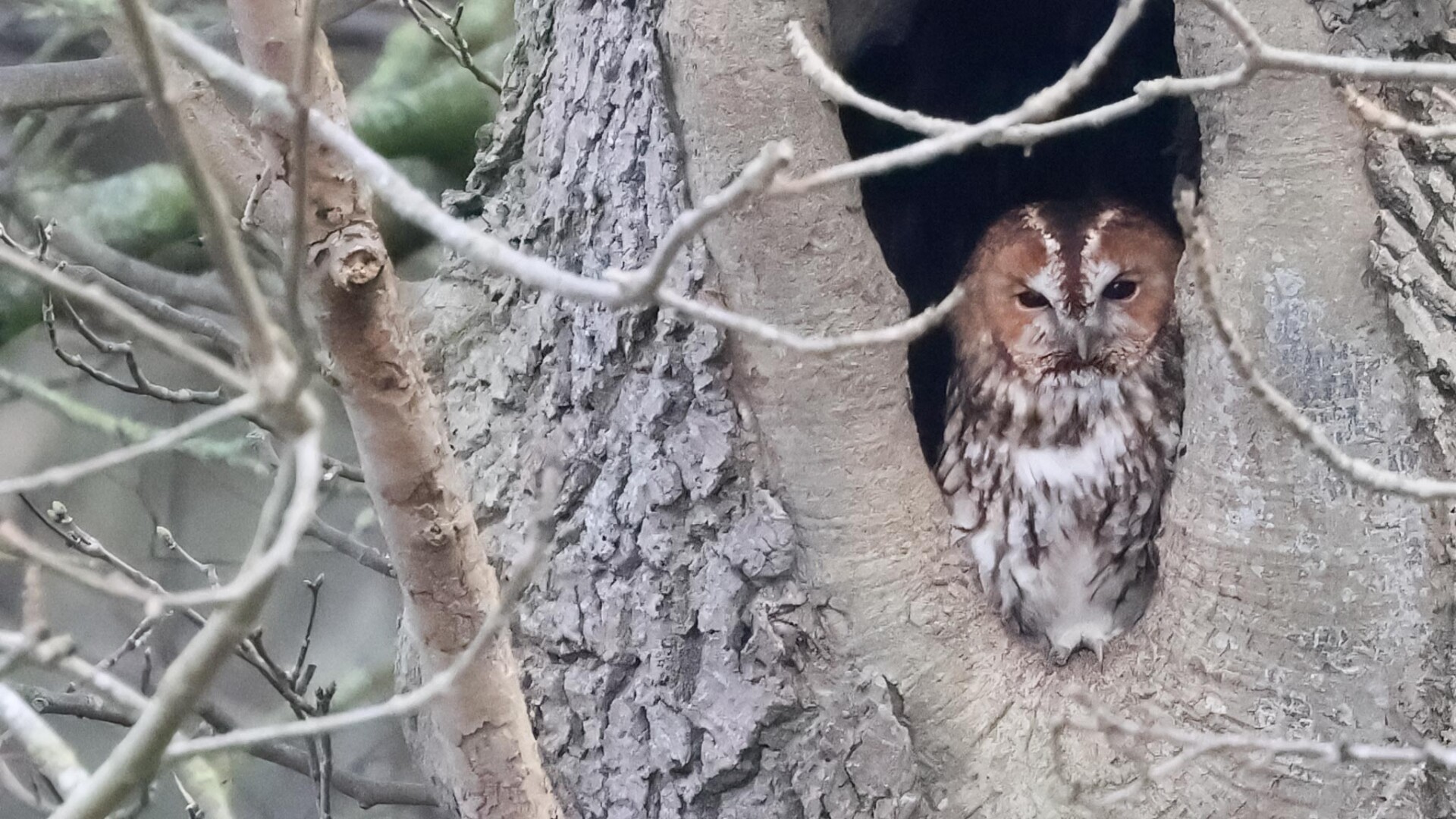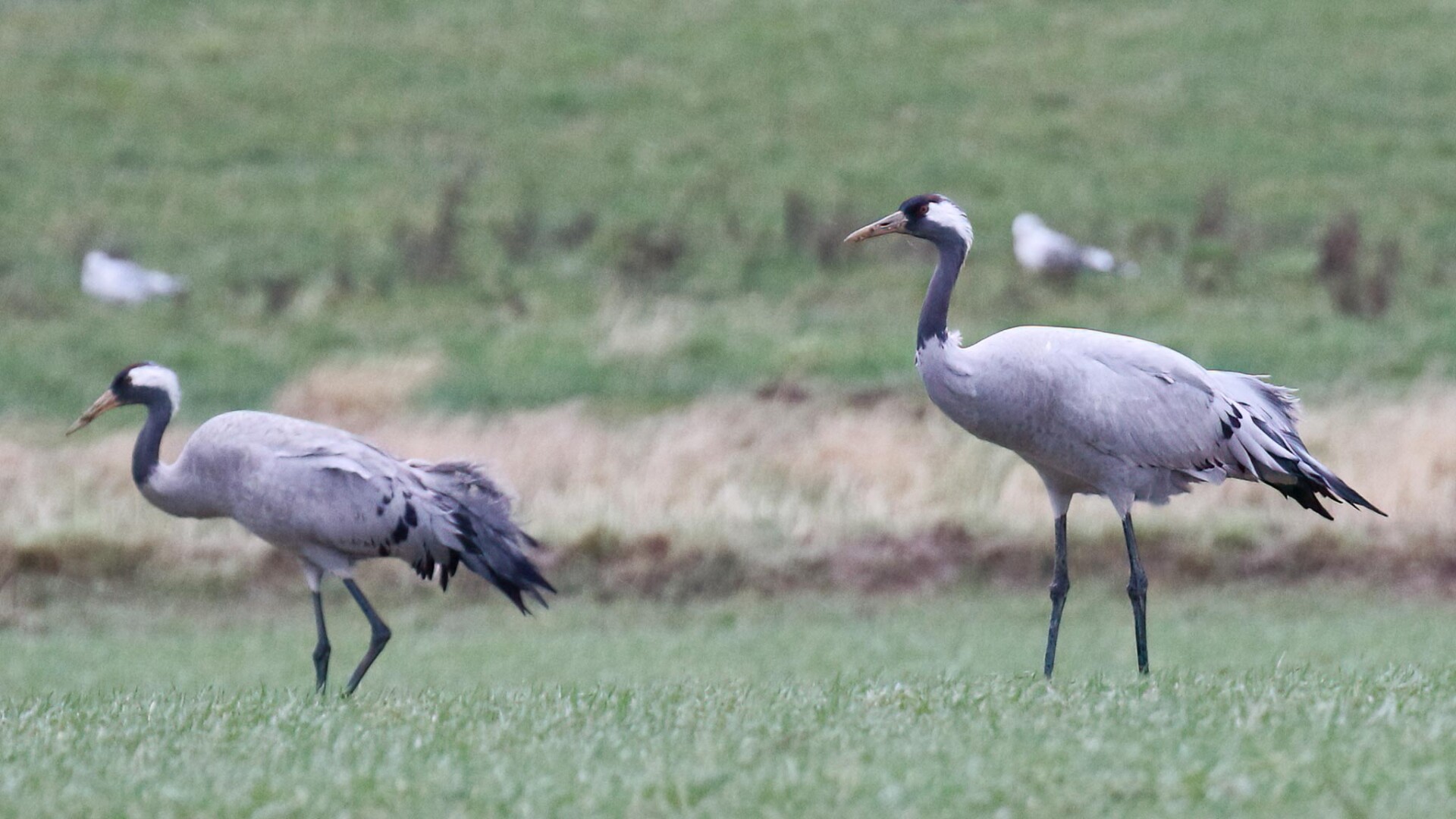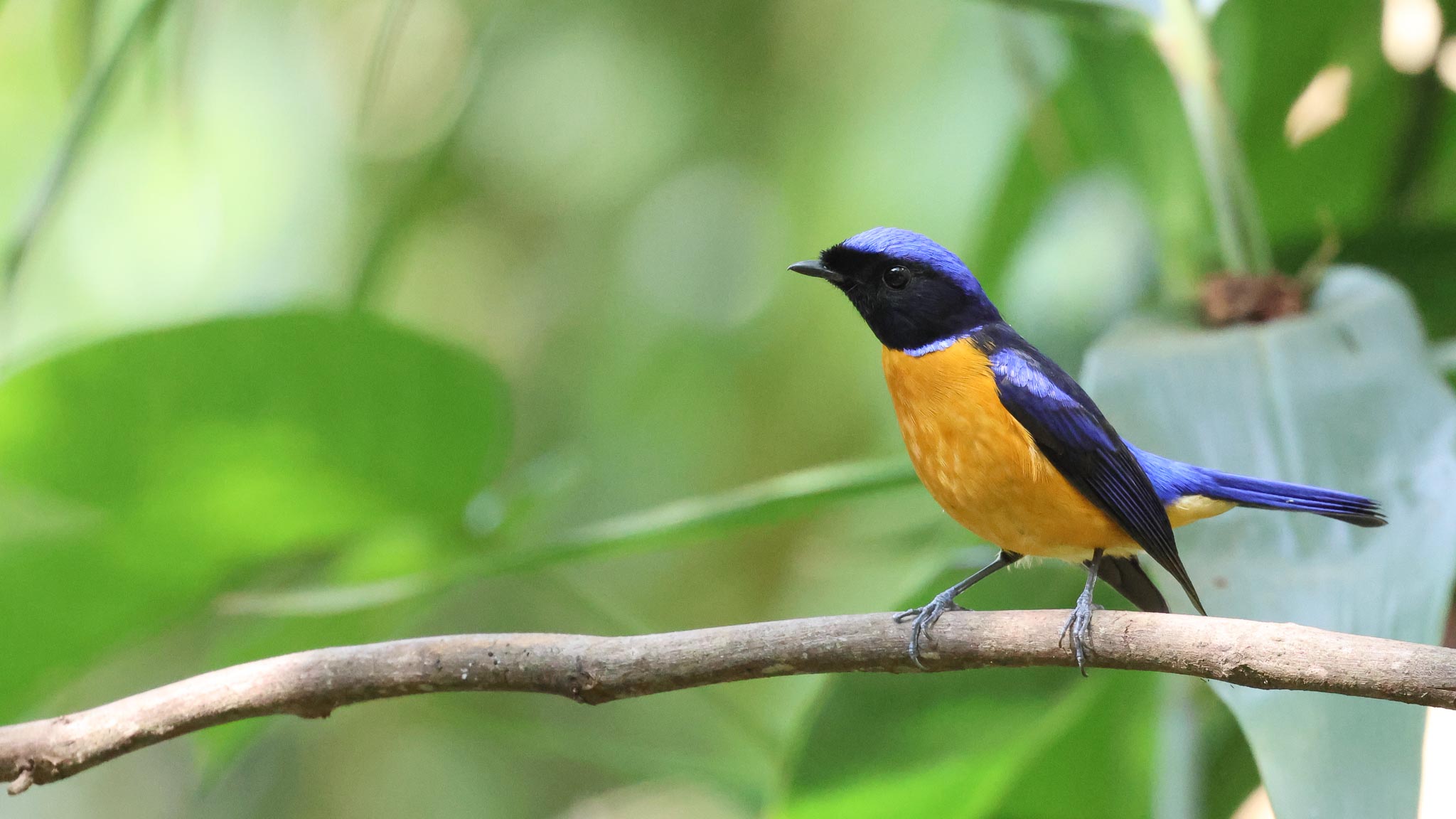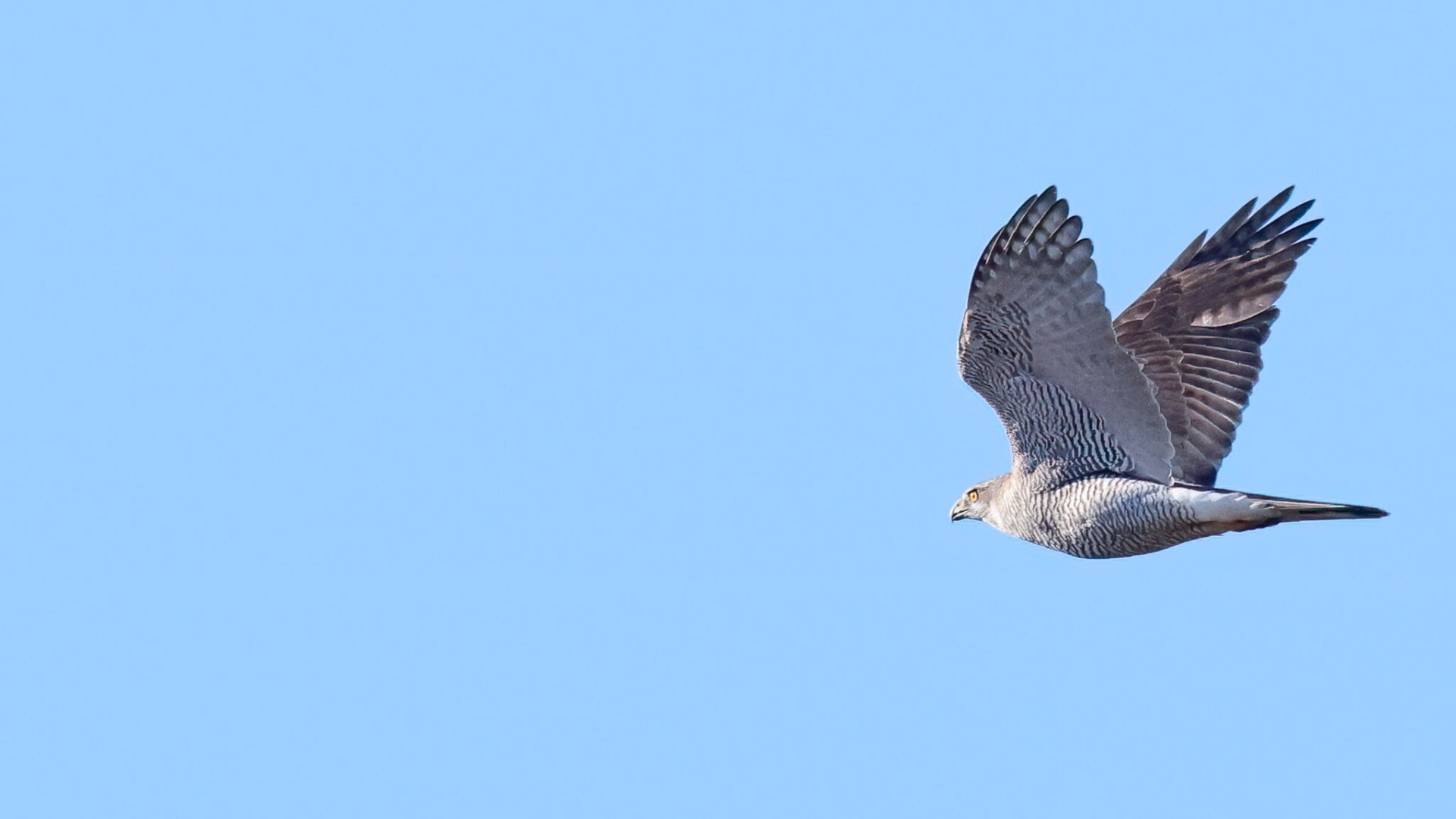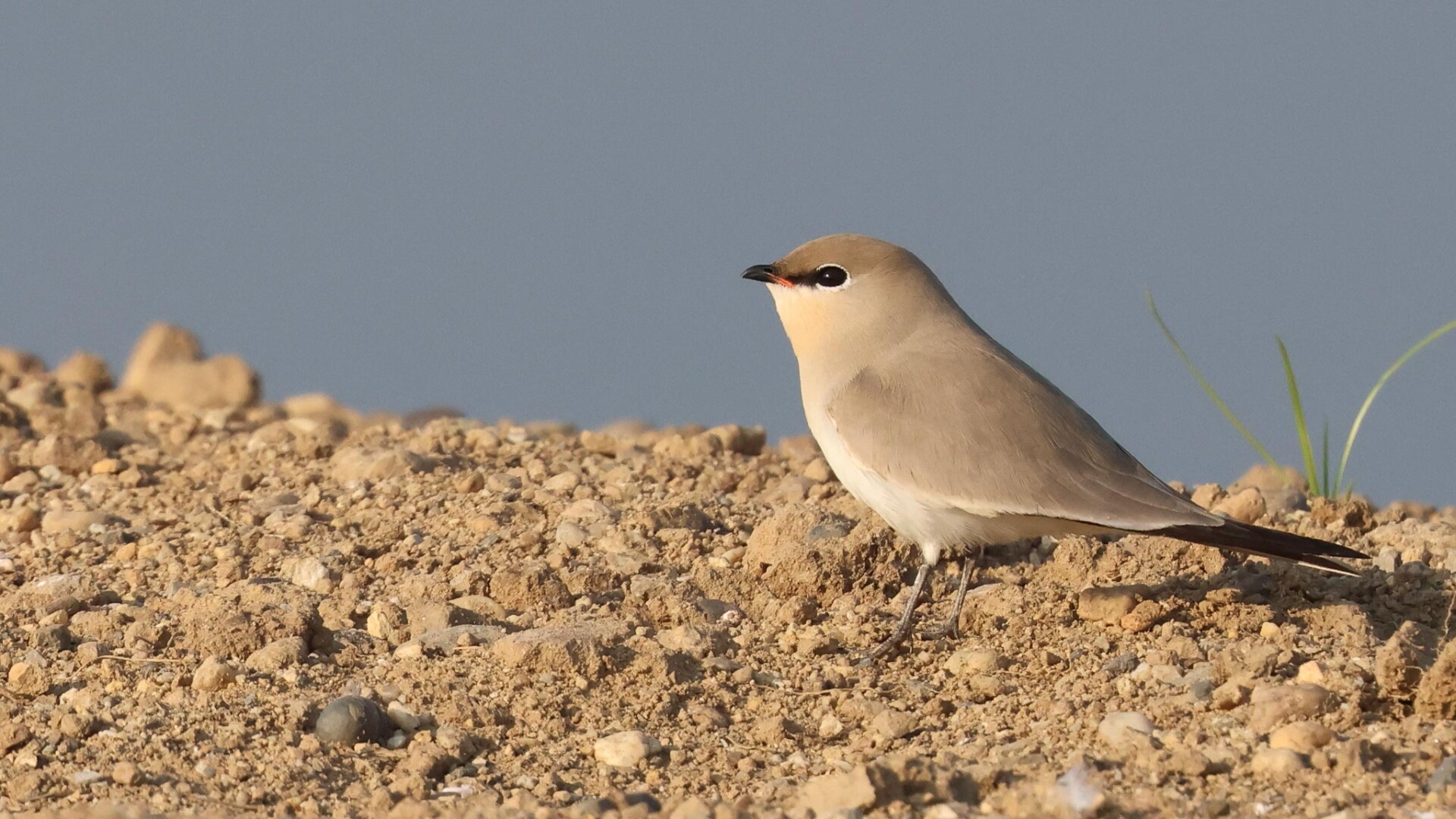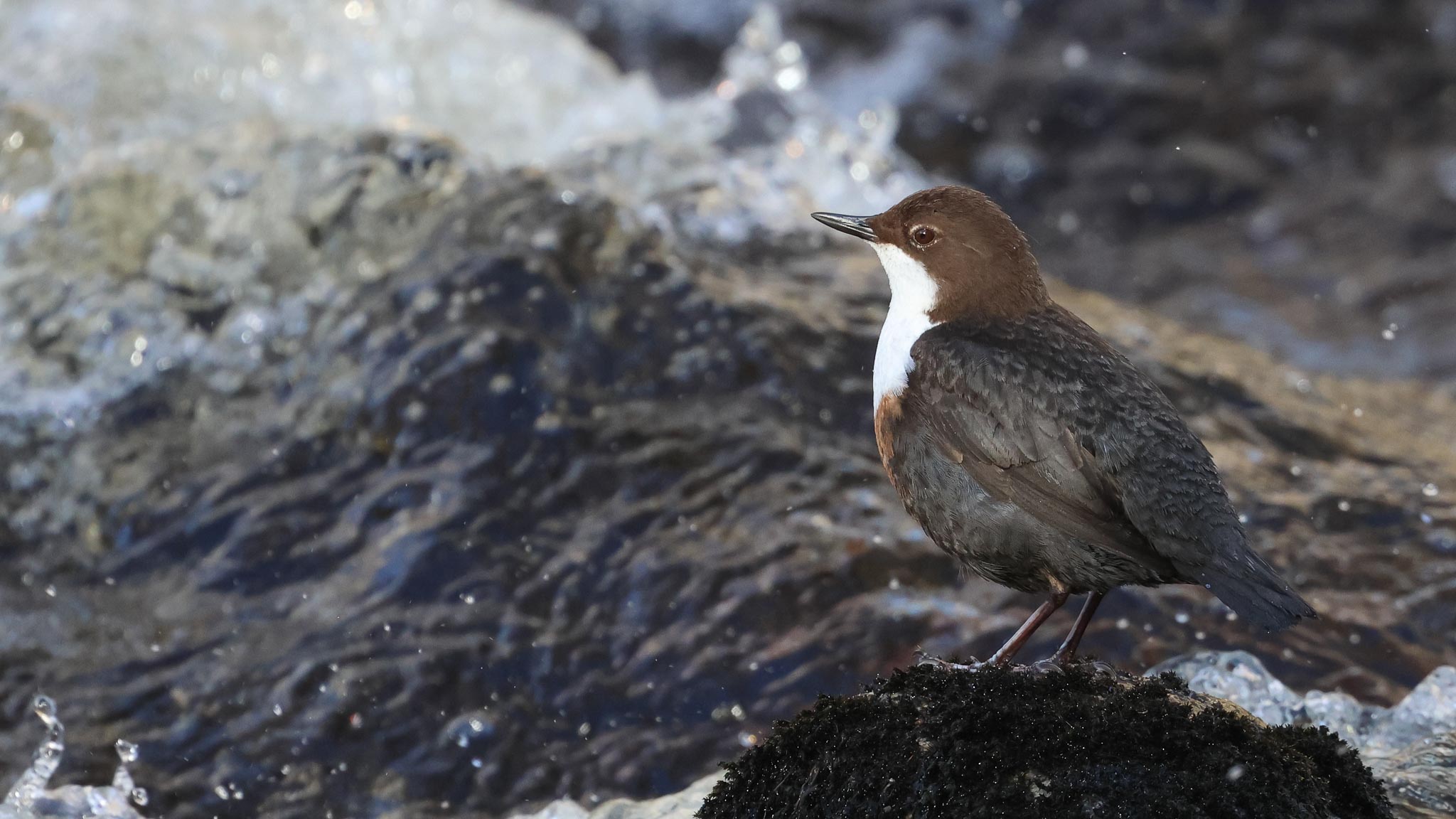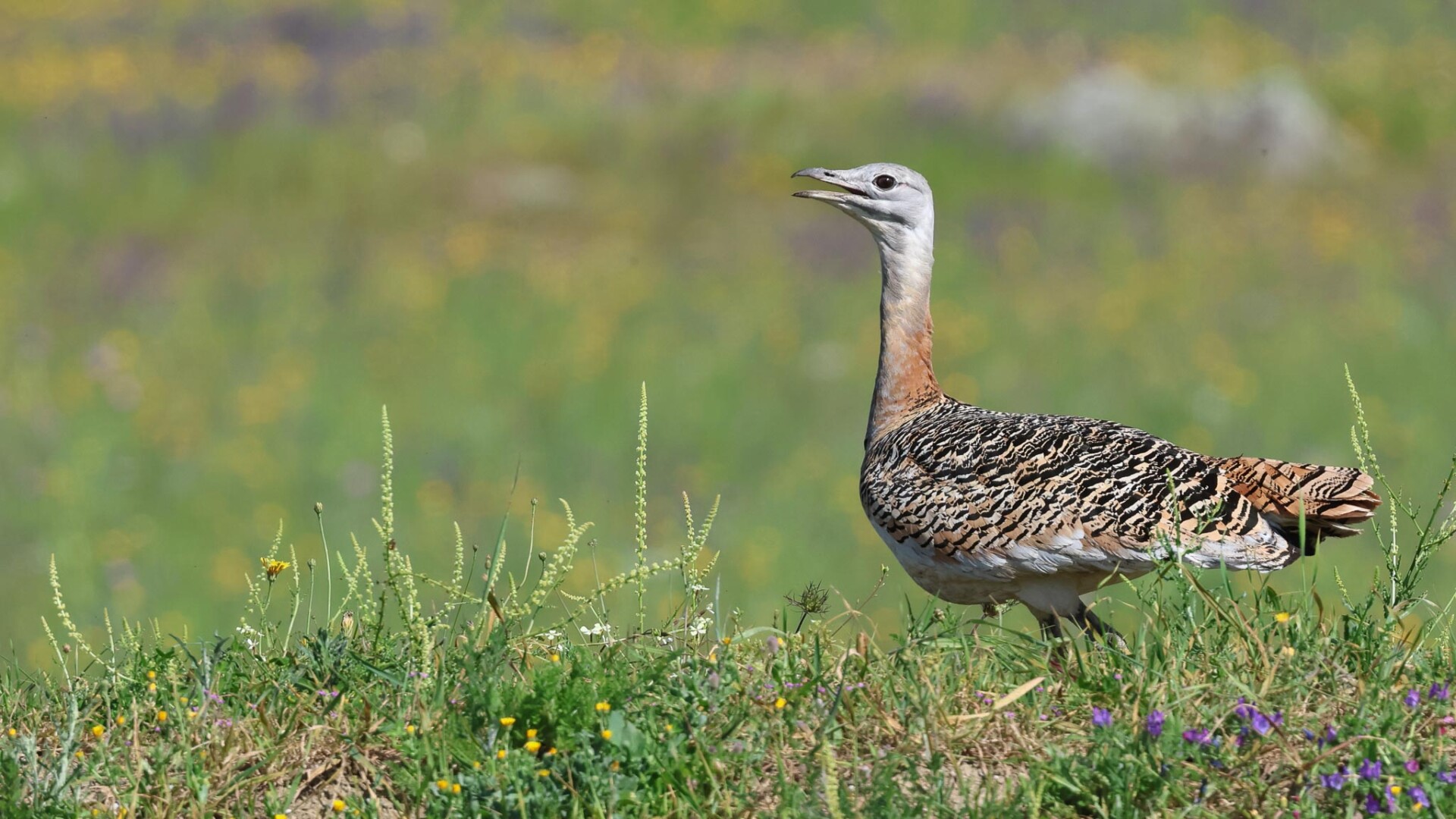Day 1 of a three day Spring Tour. It was bright and mostly sunny, but the strong and blustery ENE wind meant it was rather cooler than it would have been otherwise. We spent the day on the coast in NW Norfolk.
Our destination for the morning was Snettisham Coastal Park. As we got out of the minibus, a Greenfinch was wheezing in the trees nearby. Making our way in through the bushes, we could hear the rattling song of a Lesser Whitethroat. It was very mobile in the wind, and we had some brief flight views as it zipped across the path and back the other way. Two Bullfinches flew past calling and disappeared into the bushes. Three Swallows came over above us.
A little further up, we stopped to watch a Song Thrush on the path ahead of us, gathering food. There were more warblers along here – Chiffchaffs and Blackcaps singing, a Cetti’s Warbler shouted from somewhere deep in the bushes. We could hear our first Common Whitethroat of the trip singing too, and eventually it perched up nicely so we could see its rusty wings and white throat.
When we got to the more open area of short grass, there were several Linnets feeding on the ground and they were joined by several Goldfinches and a lone Greenfinch. A single male Wheatear was down on the grass too, so we got the scopes on it for a closer look. A spring migrant, probably on its way to Scandinavia and stopping here to feed up.
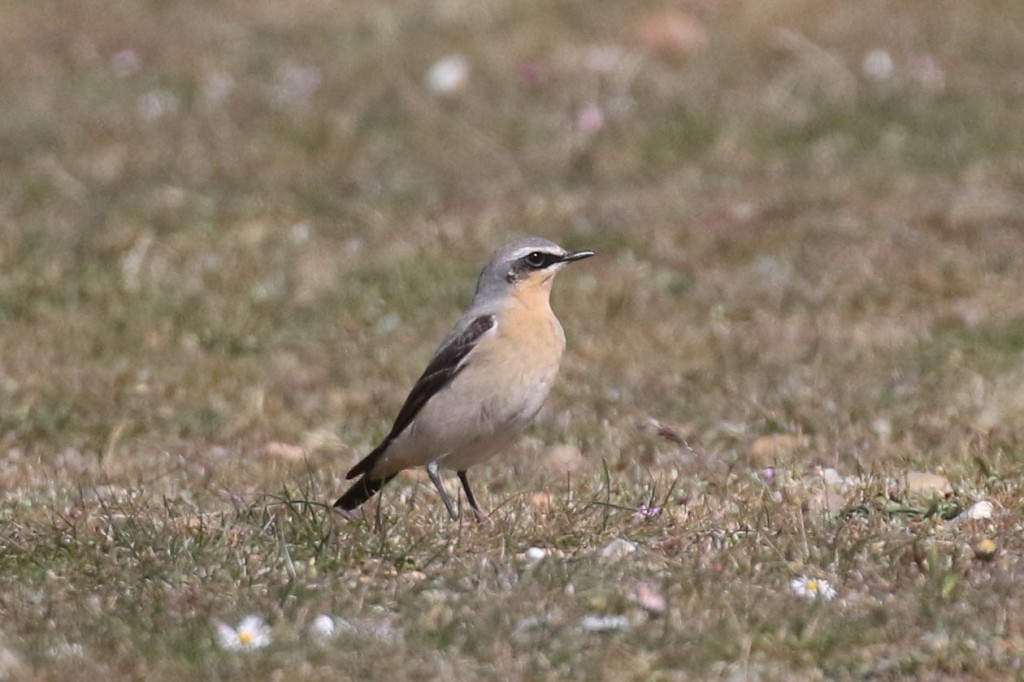
From up on the seawall, the tide was already in. We picked up a Great Crested Grebe on the water and three Avocets flew past, heading north. A drake Common Pochard flew in off the Wash, disappeared inland behind us, then back out again a couple of seconds later.
As we turned round to head on, a male Stonechat was now on the grass with the Linnets and finches. We dropped down off the seawall out of the wind, and we could just hear a Grasshopper Warbler reeling now, over the other side of the reeds, but when we walked over to listen it went quiet. We had already heard a couple on our way in, but a Sedge Warbler singing its mad scratchy song here perched up nicely for us in the sunshine in a large elder. Another Lesser Whitethroat was rattling from deep in the brambles but then flew up into the top of a large hawthorn where it showed very well – nice to see the differences from the Common Whtiethroat we had seen earlier.
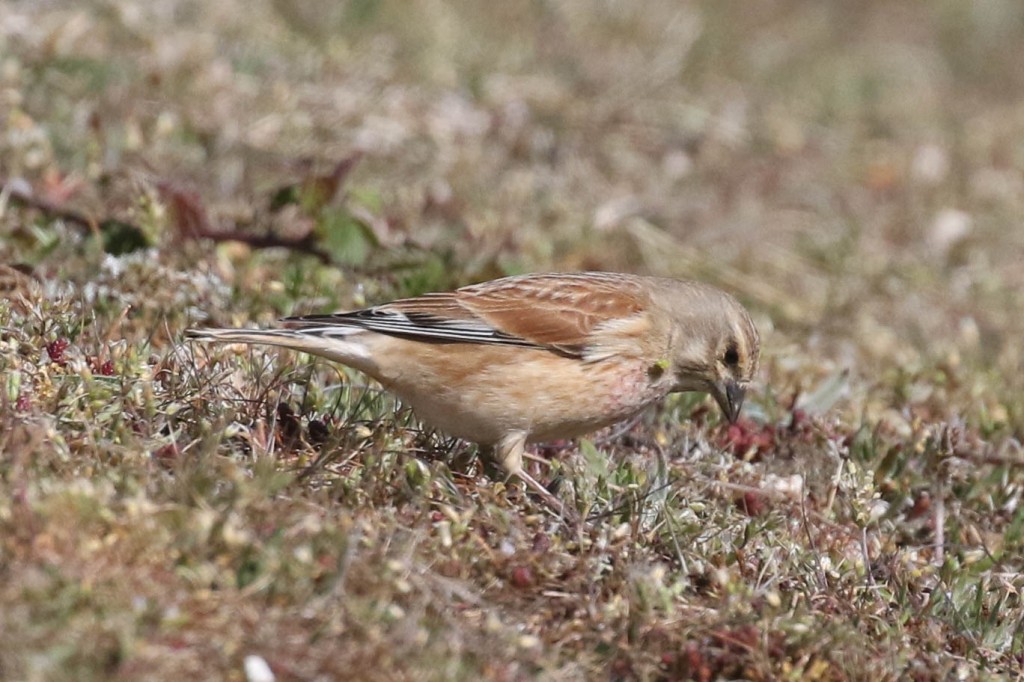
At the cleared area, lots of Linnets were feeding on the seed put out and a Reed Bunting dropped into the gorse nearby. A Stock Dove flew past but there seems to be no sign of any Turtle Doves here yet – hopefully, they are yet to arrive. Another Grasshopper Warbler reeled briefly in the bushes, but again the sound seemed to be coming from over the far side. A pair of Stonechats flicked between the low bushes ahead of us.
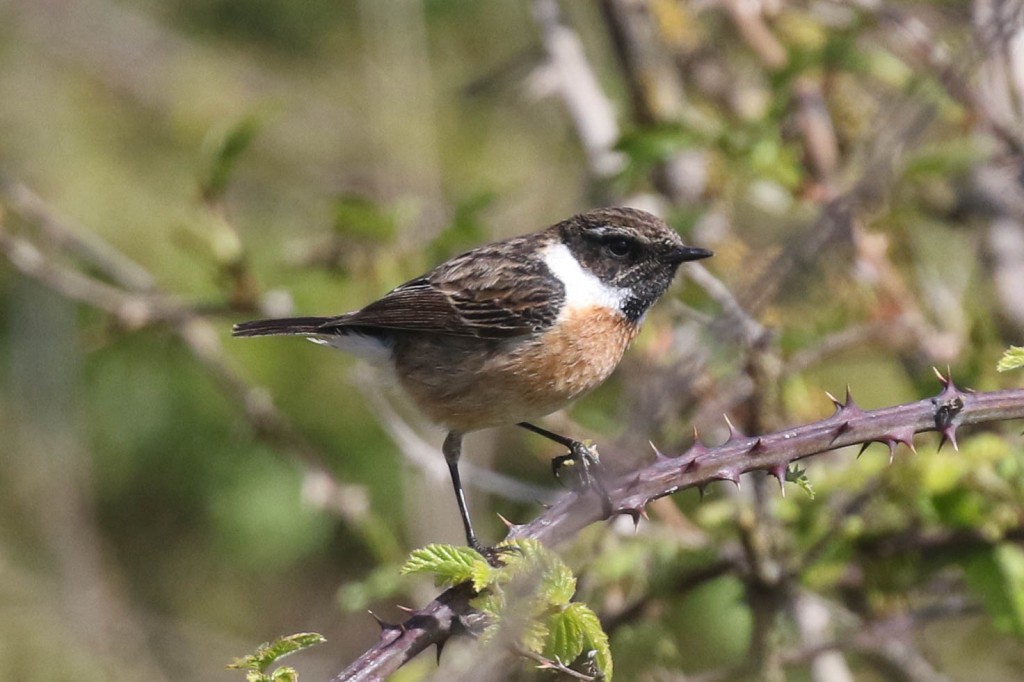
We climbed up onto the seawall again before the crossbank. A large flock of Oystercatchers came up off the beach further up towards Heacham and swirled round over the water. The beach was cordoned off ahead of us up to where the Oystercatchers were roosting. We scanned the stones from where we were standing and couldn’t see anything, but then realised two Ringed Plovers were hiding on the tide line right below us.
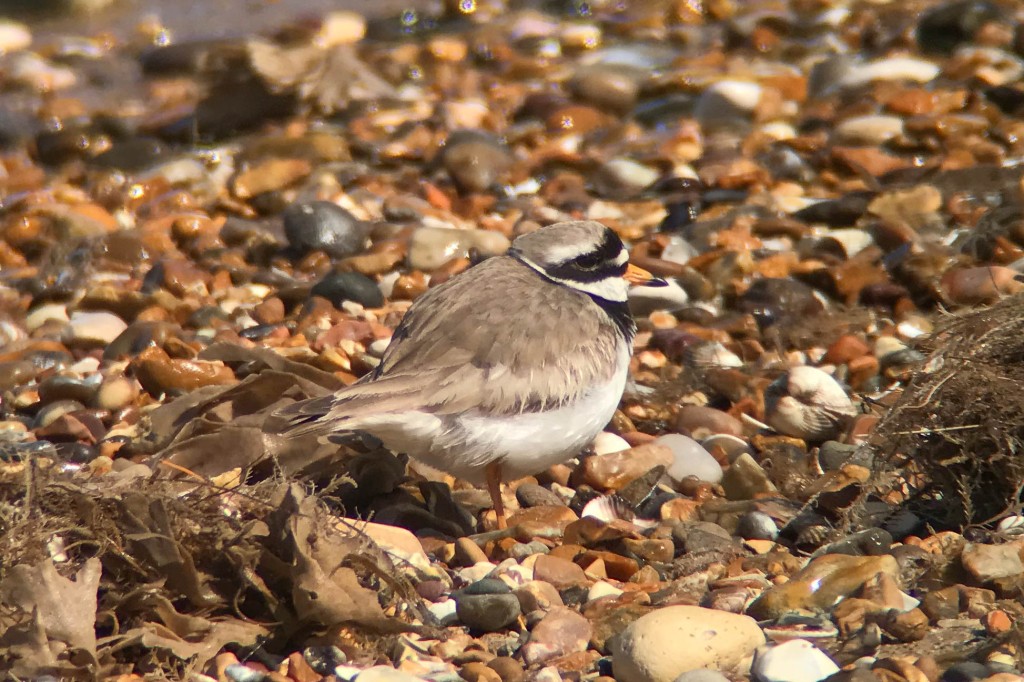
While we were looking out over the Wash, we heard a third Grasshopper Warbler reeling behind us and it sounded a bit closer. But by the time we walked down and over to the bushes, it had gone quiet. We waited a short time, but it didn’t reel again.
Up onto the inner seawall, we could see lots of gulls on Ken Hill Marshes, lots of Greylags and a few Egyptian Geese, and a few ducks. A couple of Grey Herons were in the trees at the back, and a couple of Little Egrets on the pools below.
We tried walking back along the seawall but it was exposed and very windy up here, so we cut back down, across the middle and back down the way we had come. The other Grasshopper Warblers had gone quiet too now – it was probably just a bit too windy here today.
Back to the minibus, we drove inland. We saw lots of Red-legged Partridges in the fields, but despite stopping to scan a couple of likely spots, we couldn’t find anything else of note. We dropped down to Titchwell for lunch.
A couple of Blackcaps flitted around in the sallows by the picnic area while we ate, a pair of Long-tailed Tits appeared above us in the trees, and the Blue Tits came in and out of one of the nest boxes. It was a bit more sheltered in here and one or two Holly Blue butterflies fluttered around the bushes. After lunch, we headed out to explore the reserve.
As we walked out along the main path, several Sedge Warblers were singing loudly in the reeds and song flighting, but a Reed Warbler was a bit half-hearted, just giving us short, quiet bursts of its more rhythmic song. A Great White Egret flew in over the back of the reedbed and dropped down out of view. A Marsh Harrier drifted over the path.
There were small groups of Brent Geese and a few Curlew out on Thornham saltmarsh. A Chinese Water Deer feeding on the edge of one of the channels looked rather tatty, as it seemed to be shedding its winter coat. A small group of Common Pochard were diving in the reedbed channel and a Great Crested Grebe was right at the back of the reedbed pool.
The wind was whistling in as we opened the viewing windows in Island Hide and there didn’t seem to be so many birds on the Freshmarsh from here today, possibly due to the wind. There were a lot fewer gulls and no Mediterranean Gulls at all at first. Then we heard their distinctive calls and a pair dropped in, so we could get a good look at them.
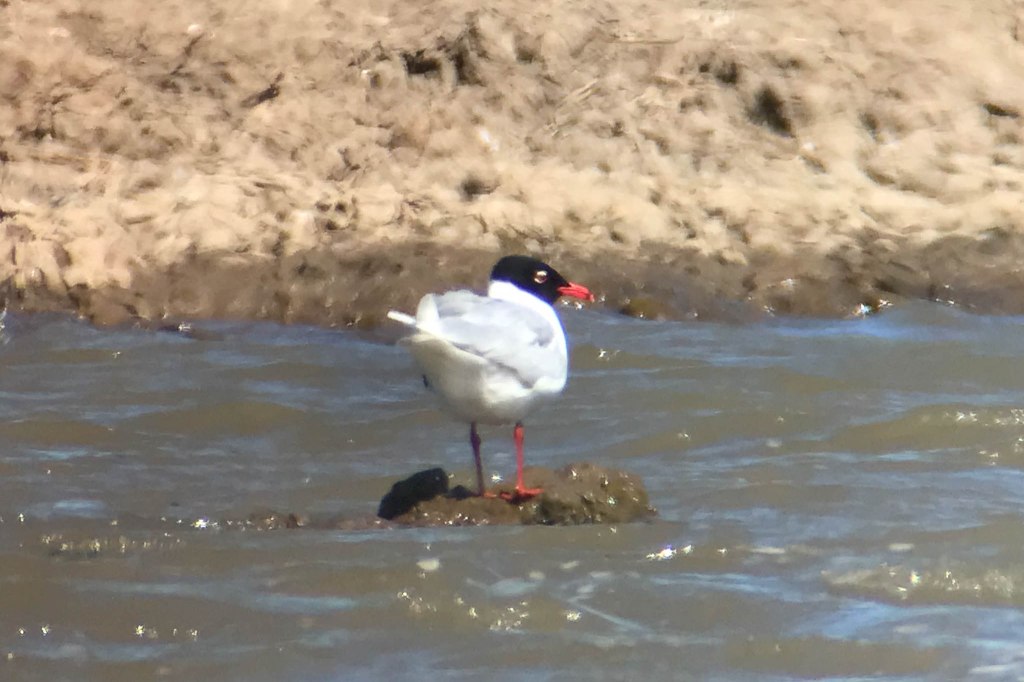
There were still lots of Avocets here, and a couple feeding close to the hide where we could watch their distinctive feeding action. A single Ruff was picking round one of the new islands. There was a nice selection of wildfowl as usual – some very smart Teal, a few Gadwall and Shoveler, and several Shelduck.
We made our way on round to Parrinder Hide, which was more sheltered from the wind. There was no sign of the Temminck’s Stint at first, but two pairs of Little Ringed Plover were trying to settle on the mud right in front of the hide. They kept getting chased off by a Ringed Plover, but when it eventually gave up one of the pairs of Little Ringed Plovers started displaying, the male fanning its tail and tilting it and the female walking round beneath it. Great to watch.
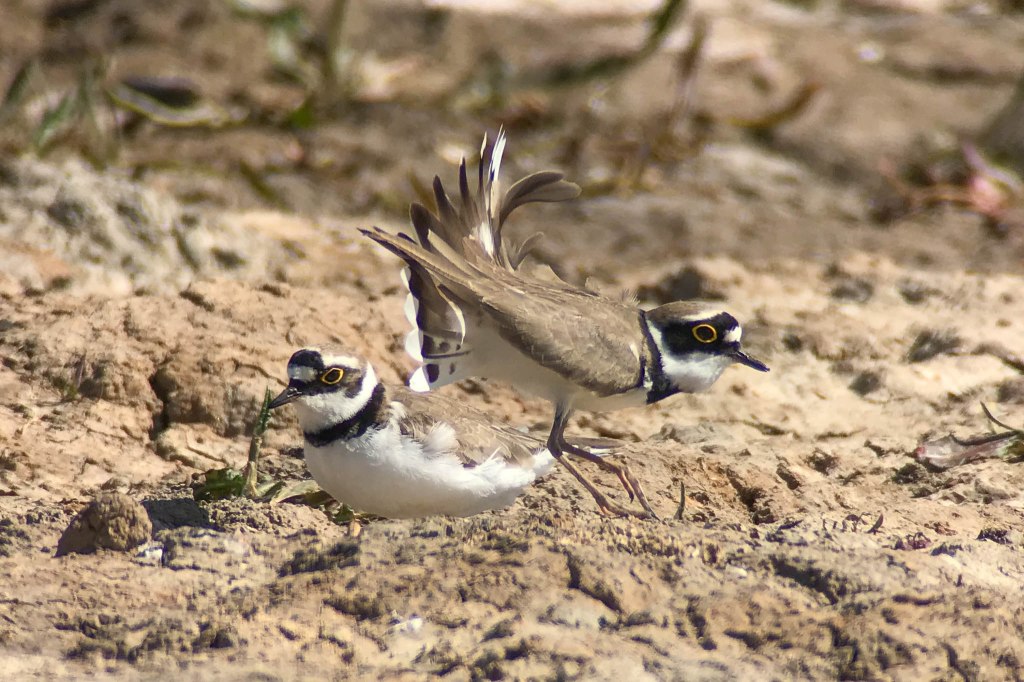
Many of the waders were clearly trying to find places sheltered from the wind. There were several Turnstones hiding in among the clods of mud on the new bund and the edge of one of the nearby islands. Ten Spotted Redshanks were feeding right along the back edge of the scrape, in the lee of the bank. All were in their stunning black breeding plumage. It is very unusual to see so many together here at this time of year, so they had presumably paused on their way north to Scandinavia and dropped in here to get out of the wind.
The Temminck’s Stint was feeding out of the wind too, behind one of the bunds, but someone in the hide spotted it when it walked out from the corner and was just visible looking over the bank from the hide. Eventually it came over the bund onto our side, and after hiding behind one of the water pipes at first, was chased out by a couple of Turnstones and worked its way along the edge of the water towards us, giving us some much better views. Through the scopes, we could see its yellowish legs.
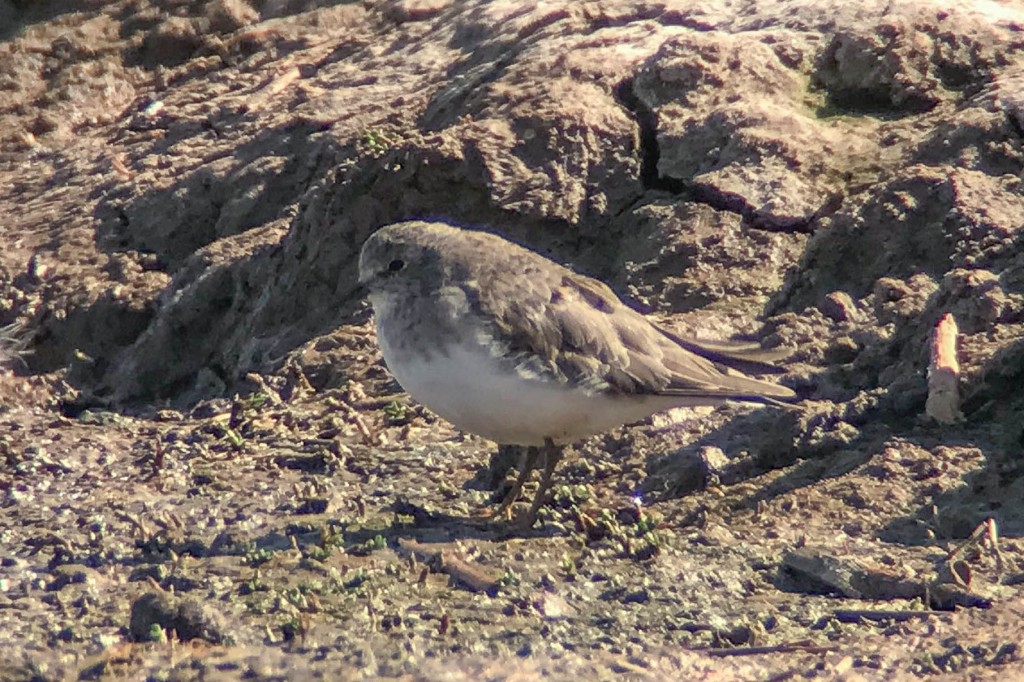
There were several Pied Wagtails around the islands, and at least one White Wagtail with them, which landed on the mud right in front of the hide so we could see its paler grey mantle. Another migrant stopping off on its way north. There were a few Meadow Pipits feeding on the islands too.
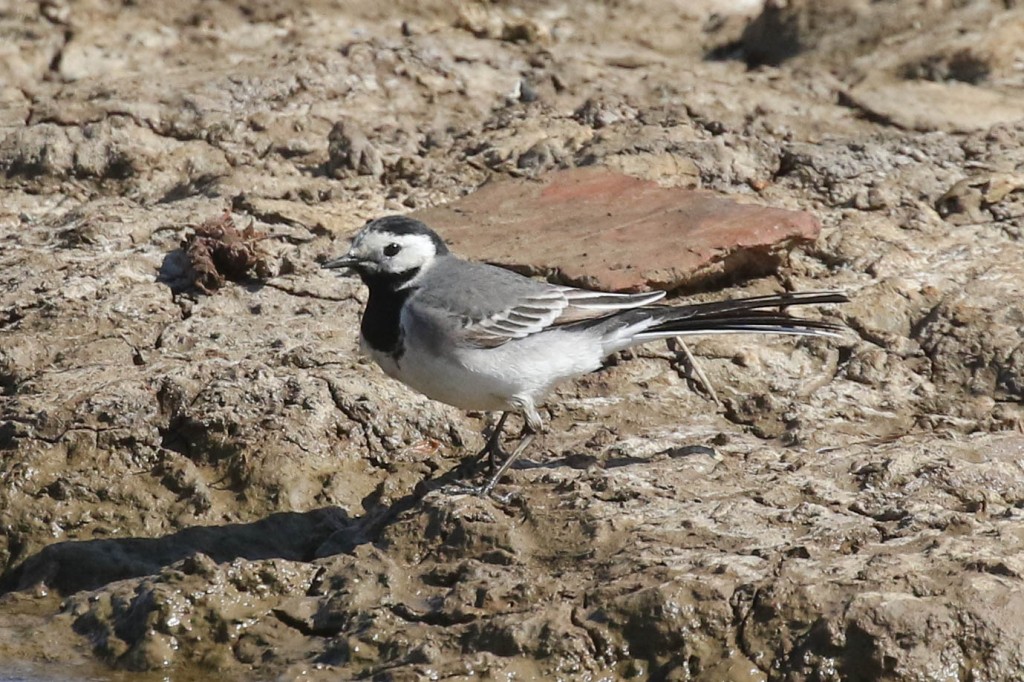
We decided to brave the wind again and head out to the sea. There was not much on Volunteer Marsh this afternoon, and the water was still very high on the Tidal Pools despite the tide being out now. It was very windy out on the beach, so we knew we wouldn’t have long here. All we could see on the museel beds were Oystercatchers, but there were several Sanderling running around on the sand a bit further up. Most of the waders were much further up towards Thornham Point – and it was definitely not the day to walk up there today!
We could see lots of Sandwich Terns over Scolt Head and two flew past out to sea. We had a brief scan of the water – its was rather choppy, but we did find a very distant raft of Common Scoter riding the waves. Then we decided to make our way back.
A Grey Plover had appeared on the grassy island on the Tidal Pools new and through the scope we picked up a single Golden Plover roosting behind a small bush next to it. A Little Egret was hiding out of the wind in one of the muddy creeks on Volunteer Marsh – in breeding condition with bright pink and purple lores! A couple of Swallows swept over our heads as we passed back past the Freshmarsh.
There had been a Dotterel yesterday, in fields just inland from Thornham, but there had apparently been no sign of it this morning. Now we got a message through to say that there were two Dotterel in the same field this afternoon, so we decided to drive round there for a look. A Wheatear was hunkered down in the spring barley in a field by the track as we walked in down the track.
The walk was a bit further than the 300 yards given in the directions, but it wasn’t too far until we found ourselves looking out at lots of clods of earth in a rather bare field. Scanning across, we found a single Golden Plover first and then the two Dotterel appeared with it. There was quite a bit of heat haze – not that it was hot, rather the reflection of UV off the bare stony earth – but we had a good view of them through the scopes. The brighter female Dotterel had a striking white supercilium and deep orange-red belly, the duller male very washed out by comparison.
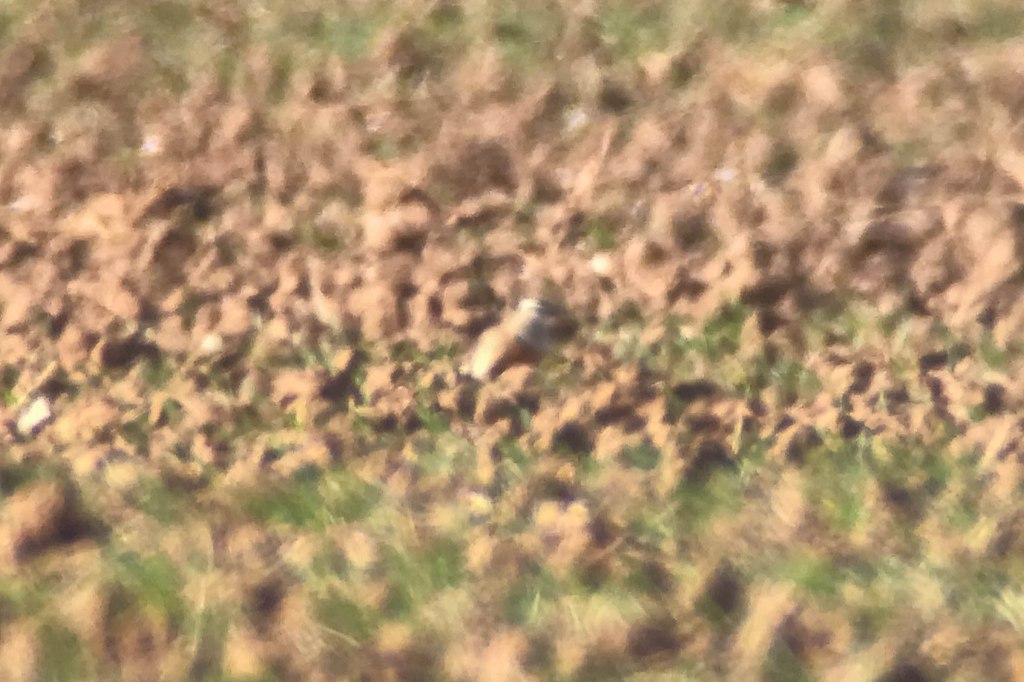
This is a very traditional site for Dotterel stopping off on their way north, from their wintering grounds in North Africa to breed in Scandinavia. We get very variable numbers each year though, depending on the conditions, so it is always worth taking the opportunity to see them while they are here.
It was a great way to finish the day and time to head back. More tomorrow.
